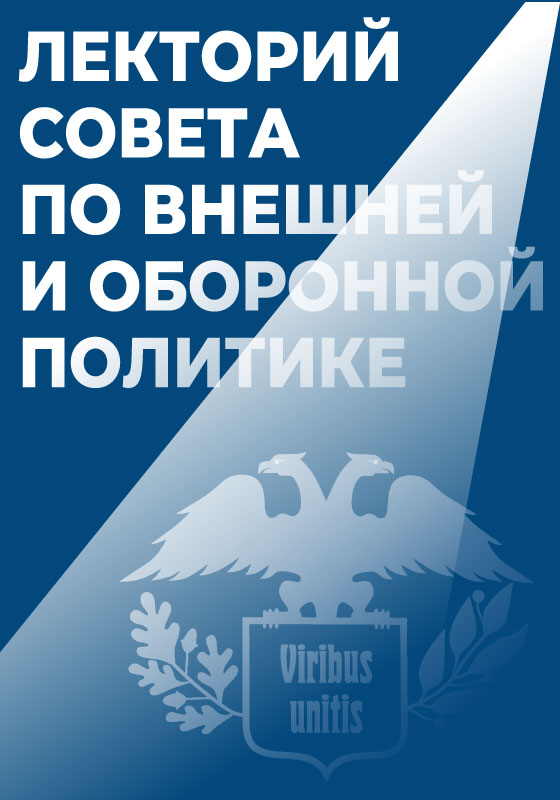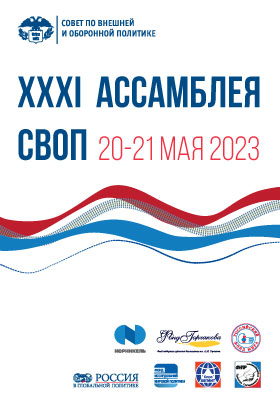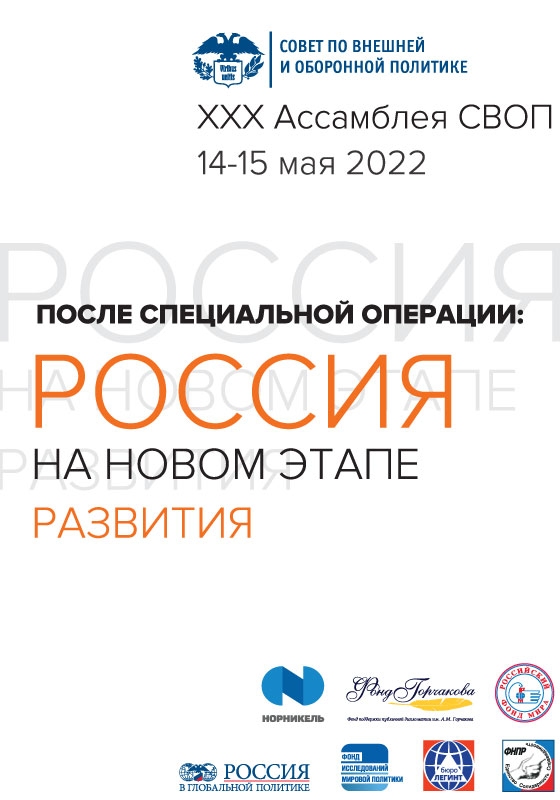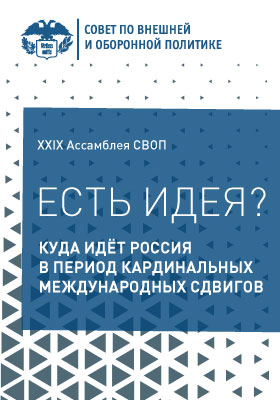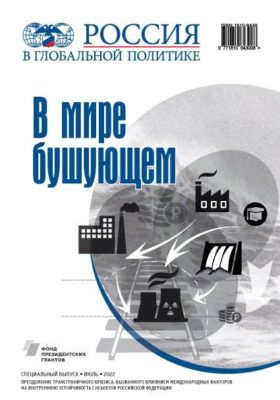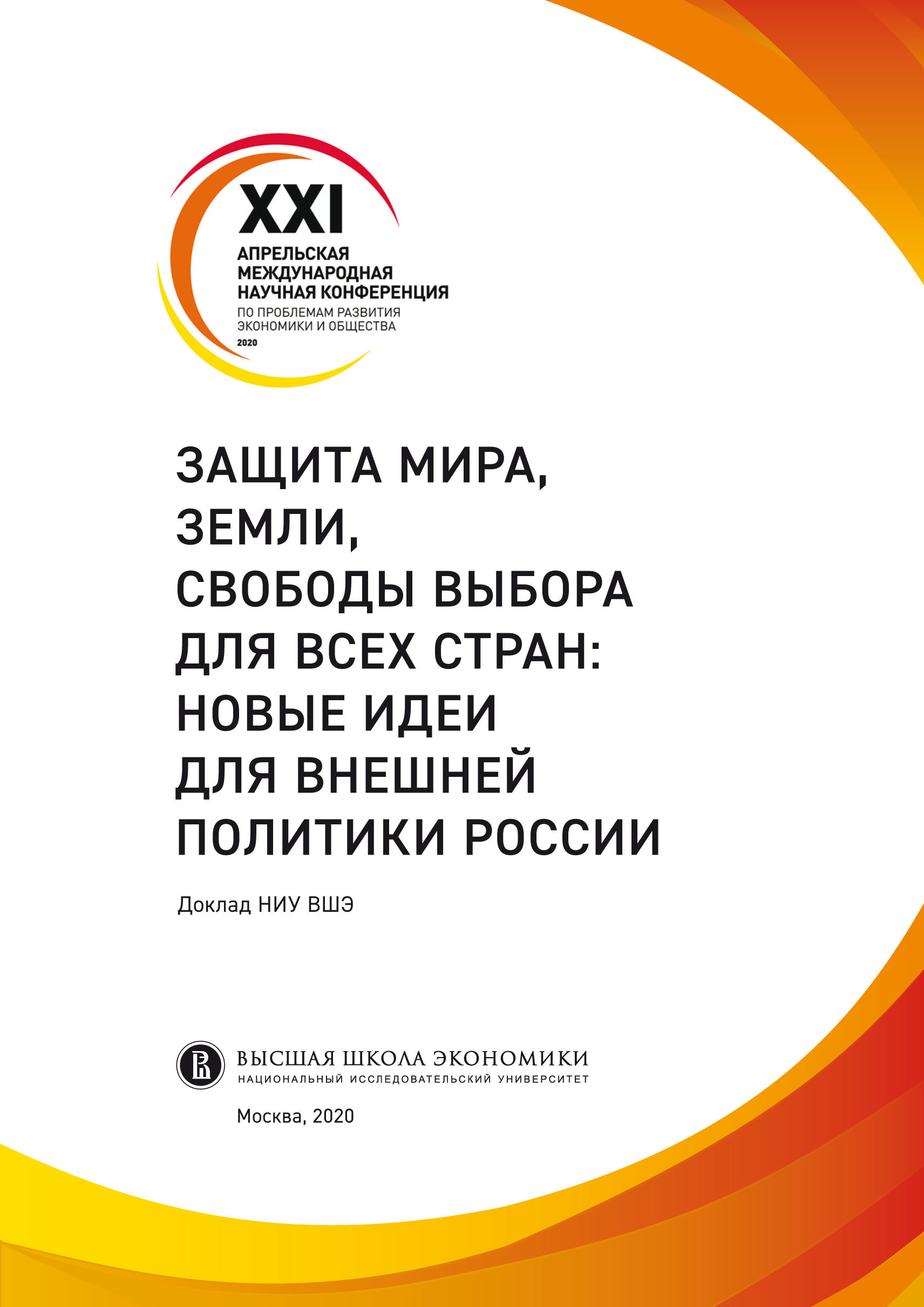Myths and Reality of Russia’s Asia Policy
The last thing anyone in Asia would be interested in is self-reflection and ambivalence inherent in the Russian socio-political consciousness, and our discussions of value or civilizational imperatives. People in the Asia-Pacific region respect effectiveness, the ability to achieve goals, consistency and perseverance.
The enthusiasm for the “pivot to the East,” which emerged in Russia (somewhat unexpectedly even for the ideologists and advocates of this doctrine) after its stand-off with the West a few years ago, seems to be over. The reason may be the loss of illusions: not only some politicians but also businessmen and the public, doused by a cold shower of Western sanctions, at first hoped that they would easily find solace in a warm embrace of Eastern partners. Incidentally, in Russia’s public perception “the East” includes almost the entire “non-West”—from the Atlantic coast of Morocco to the Japanese islands. Clearly, in this discourse “the East” simply does not exist in reality. But the persistence of the Soviet-era idea of “common destiny in the national liberation movement and anti-imperialist solidarity” fueled these expectations. Some people thought that Russia’s “civilizational platform” was closer to the East than to the West, which would help the two parties find a common language, as before. In addition, some Eastern countries owed much to the Soviet Union which had helped them build a modern economic base; so it was believed that they should be more sensitive to Russia’s needs. The very cliché of “Russia turning to the East” presupposed that Russia was the actor of this process, while the East was only the subject, interested in it in one way or another.
The disillusionment was bitter. Russia was not offered any preferential terms for joining the “non-Western” subsystem of the global economy. The political support from Eastern countries was more noticeable, but it was limited by their own national interests.
In this article, I will discuss only the Asia-Pacific region. South Asia and the Middle East differ greatly from it in development parameters, which do not promise a quick return on economic cooperation. In addition, there are more political conflicts there. To make the Asia-Pacific a key area of Russia’s foreign policy, it was proposed in 2010 to “lean on the West, stabilize the South and go East.” Russia proclaimed itself a Euro-Pacific power and a “resident power” in both Asia and Europe.
The notion ‘Eurasianism,’ in practical terms, is important only in a geographical sense and does not reflect Russia’s involvement in Asian affairs. Its philosophical essence bears no relation to the outside world and is only a tool of national identity. This means that Russia should cooperate with Asia on a “universal basis,” rather than as an “insider.” Meanwhile, the concept of “Eurasian partnership,” adopted in recent years, assigned the leading role to Russia in the formation of a new geo-economic and geopolitical space with the participation of China and other members of the Shanghai Cooperation Organization, and even ASEAN.
TOWARDS A “NON-WESTERN” WORLD?
Let us first discuss some thoughts, maybe not shaped well but essential for this analysis, about fundamental differences between the “West” and the “East,” which may be important for understanding the nature of the change in the historical development paradigm. Some political analysts and historians even suggest that the era of Eurocentrism is coming to an end. This era began approximately in the first half of the second millennium AD. In those times, China did not seek to expand; other great civilizations, like India, also believed that autarky was the best option for them; while the Arab world was in turmoil after a period of relative prosperity. Those territories were much more developed than Europe then.
Later, for various reasons (Protestantism, the weakness of fragmented states after the collapse of the Roman Empire, and their permanent wars in a barbaric Europe), relatively small European countries and ethnic groups followed a path that did not coincide with the usual model of transition from savagery to civilization. Since the times of ancient empires, successful societies had traditionally been based on the principle of “strong state” and authoritarianism, with priority given to state interests (or the interests of the sovereign representing the state) and with the people largely neglected. Europeans, in contrast, introduced the primacy of individual freedom and democracy (which had never existed before, except for the unique experience of ancient cities). Along with scientific discoveries, this gave a boost not only to inventions, the development of private initiative, the growth of productive forces and the accumulation of wealth, but also to a foreign policy of force used by these countries—in other words, the plundering of neighbors.
Thus, Europe embarked on the path of cross-border geographical adventurism (for example, the search for “a new route to the Indies”) and expansion. Colonizers did not meet with adequate resistance due to their “passionarity” and technological superiority. As a result, Western Europe took control (by using most severe measures) over vast territories, established a colonial system and began to use natural and human resources in favor of “Christian nations” (Russia was not without sin, either, in this respect). The Berlin Congress of 1878 divided nations into “civilized” and “uncivilized” and gave the former a formal right to control the rest of the world. However, if we look at the map, we will see that the historical Western (European) part of the world is not big, while the BRICS countries, for example, occupy 30 percent of the planet’s territory and account for 45 percent of its population. The conviction of Western thinkers (who convinced all the others, too) that Europe was the political center of the world throughout the last millennium led to the conclusion that the West alone could create public goods for the whole of mankind and that therefore it was destined to govern it.
The prosperity of Western countries historically depended on their domination in the economic, technological and military-political spheres, as well as on the role they played in setting the global agenda. Although the colonial system was dismantled after World War II, the larger part of the Third World still remains under economic control of Western countries. When the communist bloc (the Second World, based on an administrative command economy and a totalitarian political system) collapsed, the West took it as evidence that the economic and political models of the First World were universal and applicable to all mankind. This became known as “globalization” or, in essence, “Westernization.”
It would be absurd to underestimate the economic, financial, military, political and technological achievements of the West’s soft power or its contribution to civilizational development and the improvement of living standards in underdeveloped countries. We should pay tribute to the achievements of Western Europe, which created a new technology-centered civilization over just 200 to 300 years, and we should not indulge in ideas about the need for confrontation with the West under the banner of “traditional values.”
What does the West’s might rest on today? It rests not only on technological superiority, which is increasingly owed to the drain of intellectual resources from the rest of the world, but also on monopoly in finance, which in fact subordinates the interests of peoples to the interests of the financial oligarchy and which stands in the way of a paradigm of sustainable development to the benefit of all mankind.
Another important factor is that the global agenda is set by the ruling circles of developed countries, transnational corporations and financial institutions based in the West. However, institutions of global governance, created after World War II, have reached their limits and need radical modernization to meet current political and economic realities and take account of new influential players.
Although the West’s postwar policy brought prosperity to many underdeveloped regions in the world, it led to unforeseen consequences. As developed countries grew richer and stronger, they felt a desire to play a major role in governing global processes and protect their interests. We are now witnessing a shift in the global balance of power from the Euro-Atlantic to the Asia-Pacific region. Countries of Africa and Latin America, too, are becoming actors in global processes. In the past decade, “the rise of the South” has been particularly noticeable. As distinct from the rise of the first-tier “tigers” of East Asia, some of the newly industrialized countries with an average income in the South have very large populations (primarily China and India).
Where is Russia’s place—if there is one—in these tectonic processes? So far, Russia has been going from one extreme to the other. During the romantic period of democratic reforms, it gave priority to relations with the United States and other developed countries of the West. At the same time, the importance of the China factor began to grow already then, although Russia still continued to habitually look down on China. Of course, in the early 1990s China was different from what it is now. The country had just been through its first decade of economic reforms (in fact, full-scale market reforms began only in the early 1990s) and in terms of development level it was behind Russia and even other Soviet republics, including Asian ones.
Today, Russia, even logistically, divides rather than connects the West and the East—especially as the Russian political class still does not know the East, and all its knowledge of it is often reduced to trite clichés.
THE WEST IS THE WEST, AND THE EAST IS THE EAST
The idea that the Russian civilizational model is an intermediary stage between Europe and Asia, which allows Russia to claim a special role in organizing ties between the two, seems doubtful to me. Russia still remains an integral part of the European Judeo-Christian civilization, although it is following its own way. Russia is a kind of enfant terrible in the family of European states—this is how it is viewed both in the West and in the East. As Yuri Magarshak wrote, “Everybody in Europe knows the phrase ‘Nothing in excess’ carved into the Delphi temple. Russia’s approach is exactly the opposite: Everything to the maximum.”
Much less do the Russian civilization and culture have in common with the Confucian or Hindu mentality, or with the Middle Eastern way of life—these regions are just Russia’s neighbors, and nothing more. The mentality, behavioral stereotypes and values of Russians basically differ from those in neighboring Asian countries—and differ as much as far-away Western Europe differs from Asia.
Asian values ??are not right for Russians. The experience of Russian émigrés has shown that Russians feel uncomfortable in a society where a centralized bureaucratic hierarchy, subordination to the collective, the primacy of state interests, strict discipline, unconditional subordination to the authority, workaholism, and the restriction of legitimate “rights and freedoms” are cornerstone factors. The Asian state, compared with the Russian one, is a real Leviathan (it is not accidental that the suicide rate in South Korea is one of the highest in the world).
WHERE SHOULD THE “PATH TOWARDS THE EAST” BEGIN?
Does anyone want Russia’s presence in the region? Asia is anything but monolithic; Asia-Pacific countries are very different and are divided by deep antagonisms. On the whole, Asia still views Russia as an outsider with limited capabilities, even though geographically it is part of the continent. Asia is not ready to accept Russia’s great-power ambitions, although it still has some residual respect for the Russian people and the Russian state, its science and culture. At the same time, it agrees with the Russian proverb “Friends are OK when they don’t get in the way” and respects order and strength, which Russia lacked until recently.
As for the concept of Eurasia, it still is exotic for Far Eastern countries, and for the Chinese it sounds the same way the Wild West did for American pioneers—as a territory to be developed and included in the area of Chinese interests (this may be the message of the Silk Road Economic Belt).
But there is also historical memory that is not good for Russia. Russia reached Eastern countries, which had existed for thousands of years, only 200 to 300 years ago, and it did not behave differently from other colonizers. At least until the Russian-Japanese War, Russia was a party to the Great Game waged by colonial powers. Japan’s victory over Russia in 1905 was viewed as a historic turning point by oppressed countries of the Third World, as it showed that Western countries could be defeated. Many boys in those days were named Togo after Japanese Admiral Heihachiro Togo who inflicted a crushing defeat on the Russian fleet.
However, the negation of the past and new slogans after the 1917 October Revolution sort of washed this “guilt” away. In the years before and right after World War II, the Comintern and Soviet authorities were involved in the Asian struggle for national liberation and sought to impose their own model of socialism in cooperation with the leaders of newly independent countries and “progressive” political forces. Not everyone in Asia finds these memories pleasant. At the same time, the Soviet anti-colonial mentality and support for “the national liberation struggle of oppressed peoples” was (and still is) paradoxically mixed with a colonial approach towards neighboring countries and outright racism.
During its last decades, the Soviet Union did not have adequate knowledge of the essence of country identity in Asia or strong positions in the region. Since the mid-1950s, the decisive negative factor had been an artificial and actually subjective Sino-Soviet conflict, in which Moscow’s influence in the main Asian country, built up for decades, was dumped. The Soviet Union viewed the Asian part of the “world socialist system” as a backyard and invested little in this sphere of its influence. Moscow stood aloof from integration processes that began in the region in the late 1960s (ASEAN was established in 1967) and overlooked the obvious growth of the Asian economy (starting with the first wave of newly industrialized countries—Taiwan and South Korea, with which it had little contact).
The collapse of the Soviet Union and the subordination of Russia to the Western development paradigm showed the shortsightedness of this policy. It was then, in the early 1990s, that Russia should have thought of “turning East” and should have realized that the geo-economic and geopolitical orders had begun to change. It was then that a global tendency for changing leaders began to surface (amid bombastic statements about “the end of history” and a “unipolar world”).
It is now clear that the breakup of the Soviet Union has not led to the “end of history” and the emergence of a globalized world where all would play by the same rules under the direction of the West, led by the United States. Moreover, it has created a new tendency towards fragmentation of international relations. Perhaps, the current upheavals (wars and conflicts, internal, international and intercommunal, the growth of terrorism and extremism, and the breakup of regional integration groups) means a decline of the postwar era and the change of the geopolitical order established after World War II. The growth of aggressive nationalism, the victory of Donald Trump in the U.S., and Brexit are only the latest manifestations of this trend.
Nation states, rather than blocs or non-state actors (although I do not question their importance) are again becoming the leading agents of international relations. The world is becoming increasingly polycentric, where the role of developing nations and major civilizational platforms is growing. However, historians warn about the dangers of the “Thucydides Trap”—meaning that situations when a rising power challenged a currently dominant one (Athens and Sparta in ancient times, and Germany and England in the early 20th century) most often ended in wars.
How can this be avoided? Perhaps, more attention should be given to growing tendencies in the “non-Western” world, to network structures, and the emergence of new formats, such as the SCO and BRICS. But this requires a deep understanding of national specificities and the historical situation in Eastern countries, which we obviously lack. This is the reason why many ideas pertaining to the specificity of these countries, their elites and decision-making mechanisms remain beyond the knowledge of many scholars and the public at large. The “pivot to the East” could help fill this gap, as this strategy required in-depth expert analysis. In practice, however, a quantitative, mechanistic approach was used, involving traditional tools based on the Western liberal doctrine. Deep national specific causes and peculiarities in the formulation of development objectives and their implementation often remain beyond analysis.
How can Russia get closer to Asia, while maintaining its own identity? The “pivot to the East” first began in the times of 16th-century Cossack Yermak Timofeyevich, a conqueror of Siberia. At first, it was just a geographical, colonial expansion. Now we talk of equitable integration. What does it require?
There is no magic formula. What is needed is much work, including the following points (not in the order of priority):
Firstly, Russia should improve its political and military prestige in the Asia-Pacific region (using, among others, the “Syrian image” gained recently), and emphasize its ability to project its capabilities to the Asia-Pacific as a counterbalance to the U.S. “increased presence” in Asia (Pivot to Asia), but not limit itself in responding to military challenges to the security of its interests in the region.
Secondly, Russia should encourage contacts with Asian countries at a high political and military level (so far largely limited to China), including multilateral formats (one can only regret that the Russian president does not attend East Asia Summit meetings).
Thirdly, Russia should actively promote its concepts for Asian security and integration and participate in the settlement of regional conflicts in Asia, including as a permanent member of the UN Security Council (avoiding a tendency to delegate responsibility for it to China).
Fourthly, Russia should increase connectivity with Asia—flights, logistics, communications, industry conferences and meetings, tourism, etc.
Fifthly, Russia should continue its strategy of developing its Far Eastern region in linkage with the Asia factor (priority development areas, free ports, investment projects, etc.). Much has already been done in this respect. The recent Eastern Economic Forum in Vladivostok became a new landmark.
Sixthly, Russia should focus on major long-term co-investment projects and the export of technologies, knowledge and sophisticated products (including armaments), and put the “commercialization” of Russian technologies on a state-regulated basis (this process is now out of control and in the interests of Asian companies only), with due account for copyright.
Seventhly, special consideration should be given to the issue of free trade agreements with Asian countries, which requires an integrated approach.
Eighthly, Russia should give its elites and population knowledge and understanding of history, culture, politics, and the current situation in Eastern countries (through the higher education system, the media, and cultural exchanges).
Ninthly, Russia should use more Orientalists in public administration and business management (perhaps, the improvement of relations with China is due to the appointment of eminent Sinologists to several senior posts in the Ministry of Foreign Affairs).
Tenthly, Russia should encourage the participation of Russian specialists of various kinds in the development of Asian countries and also use the knowledge and capabilities of the Russian diaspora.
* * *
When thinking about Russia’s self-identity and development vectors, Russian politicians, scholars, analysts and society should always remember one main idea. The Asia-Pacific, for all its diversity, is a thriving, energetic and very pragmatic region of the world, which knows its worth and which is self-sufficient in cultural and psychological terms. The last thing anyone there would be interested in is self-reflection and ambivalence inherent in the Russian socio-political consciousness, and our discussions of value or civilizational imperatives. People in the Asia-Pacific region respect, perhaps more than anywhere else, effectiveness, the ability to achieve goals, consistency and perseverance. Russia has yet to prove that it has these qualities. But if it succeeds, various ideological concepts intended to justify mutual attraction between Russia and the Asian world will simply not be needed. The “common destiny” will appear by itself, because it will be interesting and beneficial to all the parties.




